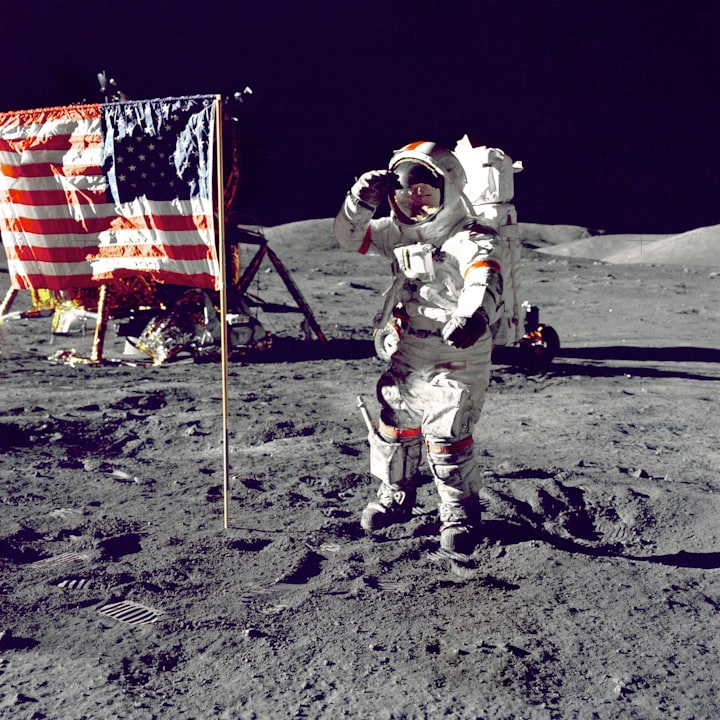2021 was a colossal year for space investigation. 2022 could be much greater.
In the coming year, NASA intends to send off an SLS moon rocket and Elon Musk's SpaceX trusts fly its cutting edge Starship
The year 2021 will likely go down in the archives of room history as a defining moment, a second when conventional residents began leaving Earth consistently. Numerous groups took off on a few diverse space apparatus, and for a short second this month, there were a record 19 individuals in the weightless climate of the room — and eight of them were private residents.
In any case, for every one of the accomplishments of 2021 — which incorporate a meanderer arriving on Mars, a little robot called Ingenuity flying in that planet's slight climate and the send-off of the James Webb Space Telescope, the most impressive space telescope ever — 2022 could hold the same amount of guarantee, if not more.
Assuming 2021 was the extended time of the private space vacationer, 2022 could be set apart by the initial moves toward a re-visitation of the moon, as NASA and the developing space industry try to keep up with the force that has been working in the course of recent years in what has added up to a renaissance of investigation.
A couple of enormous rockets, both more impressive than the Saturn V that fled space travelers to the moon, are preparing to fly in 2022. Those send-offs would stamp the main huge strides in NASA's Artemis program, which plans to return space explorers to the lunar surface by 2025 and make a mission that would permit a super durable presence close by the moon.
Following quite a while of advancement, and billions of dollars spent, NASA is at long last equipping to send off its Space Launch System rocket and Orion team case, which are intended to return space explorers to the moon interestingly since Apollo. The primary mission, known as Artemis I, is booked for March or April and would send Orion, with practically no team ready, to circle around the moon.
Assuming that all works out in a good way, it would be trailed by Artemis II, in May 2024, which would again send Orion to circle the moon, however this time with space travelers ready. NASA trusts a team would have the option to arrive on the moon by 2025, however that would rely upon the accomplishment of past flight tests and SpaceX's capacity to get its Starship rocket fully operational.
Over the previous year, Elon Musk's SpaceX has been moving hotly toward the main orbital send-off of Starship, the vehicle that won a $3 billion NASA contract this year to meet with the Orion and transport NASA's space explorers to the lunar surface.
Musk has said the organization could endeavor a send-off in mid-2022. Dissimilar to the SLS, which would discard its enormous promoter stage into the sea later send-off, Starship is intended to be completely reusable. Subsequent to placing the Starship rocket into space, the Super Heavy supporter would fly back to its launchpad where it would be gotten by a couple of arms broadened like chopsticks.
Recently, the organization endeavored suborbital jumps, where the space apparatus sent off to a height of around six miles, awkwardly dove back to Earth on a level plane, then, at that point, corrected itself and refired its motors prior to landing.
A few of the arrival endeavors finished in fireballs. In any case, in May, the organization pulled off an effective landing, filling Musk's expectation that the rocket could be utilized to move individuals and freight across the planetary group.
"The general objective of Starship is to have the option to move sufficient weight to the moon and Mars," he said in a meeting with The Washington Post recently. "Also to have a self-supporting base on the moon and at last a self-supporting city on Mars."
In front of a space explorer landing, NASA is wanting to send science missions to the lunar surface. Those missions would likewise be done by workers for hire, recruited by the space office to convey science analyses and innovative exhibits that NASA says would "help the organization concentrate on Earth's closest neighbor and get ready for human landing missions."
The first would be by Intuitive Machines, a Houston-based organization that is planning to convey science tests in mid-2022 and again later in the year. That subsequent mission, toward the south pole of the moon, would have a drill that would test the lunar regolith for ice. Astrobotic, situated in Pittsburgh, is likewise wanting to convey payloads to the lunar surface under the NASA contract.
Rocket Lab is additionally planned to send off a little satellite to the moon to fill in as an antecedent for human missions by testing the circle for the space station, known as Gateway, that NASA desires to ship off the moon. Rocket Lab, which dispatches from its site in New Zealand, desires to have its first send-off from the United States in 2022 from the cushion it utilizes at NASA's office on Wallops Island, on Virginia's Eastern Shore.
It likewise plans to endeavor to recuperate a promoter one year from now. Be that as it may, not at all like SpaceX, which flies the primary phases of its rockets back to landing locales on the ground or ships adrift, Rocket Lab plans to get its moderately little promoter under a parachute with a helicopter.
2022 ought to likewise see the introduction of various new rockets, including the United Launch Alliance's Vulcan rocket, which would be utilized by the Pentagon to send off public safety satellites. Relativity Space, which utilizes a three-dimensional printer to make its rockets, plans to initially send off of its Terran 1 vehicle from Cape Canaveral before long also.
Boeing additionally is hoping to refocus. 2021 should be the year it at last finished a practice run of its Starliner rocket, which is being intended to ship NASA's space explorers to and from the International Space Station. Yet, by and by it ran into inconvenience. Toward the finish of 2019, the space apparatus endured programming issues, driving the flying behemoth to stop the experimental drill. The rocket at long last got back to the launchpad this late spring, however failed right from the start.
This time, the organization said the issue was equipment: 13 valves in the help module stalled out, constraining the organization to bring the space apparatus back into its assembling office. The organization as of late reported that it would need to trade out the help module. It's presently hoping to endeavor to send off again at some point in May. Assuming that works out in a good way, a send-off with space explorers on board would follow.
The space station could see another new vehicle visit in 2022: Sierra Space's Dream Chaser, a spaceplane that seems as though a little form of space transport. The organization has been fostering the winged vehicle for a really long time with the expectations of one-day flying space travelers. Be that as it may, until further notice, it has an agreement from NASA to utilize it to convey freight and supplies to the space station. What's more it as of late declared that it got a $1.4 billion venture that it said would assist with speeding up the program.
SpaceX's Dragon shuttle, which conveyed two groups of space travelers to the space station in 2021, is scheduled to keep flying teams there in 2022. It likewise would fly something like one mission, sanctioned by Axiom Space, in which private space explorers who are paying $55 million each would spend somewhat more than seven days on the station.
Jeff Bezos' Blue Origin, which flew three outings to the edge of the room in 2021, plans to fly at least six suborbital trips in 2022. (Bezos claims The Washington Post.) And Richard Branson's Virgin Galactic is expecting to finish its test mission and begin offering business administration on its suborbital spaceplane for paying space sightseers.
While those flights go simply past the edge of the room to a couple of dozen miles high, NASA's researchers and designers will be centered around an undeniably more far off the objective, 1,000,000 miles from Earth. There, the James Webb Space Telescope would start to spread out itself insensitive moves later it was sent off on Christmas Day on an Arianespace Ariane 5 rocket. NASA says there are 344 potential "single-point disappointments" and assuming that anything turns out badly it is absolutely impossible to send a maintenance team.
Be that as it may, assuming it works, the telescope would have the option to catch light from in excess of 13 billion years prior to the start of the development of the universe.
The telescope has been called an Apollo second for science and could begin responding to a portion of stargazing's greatest inquiries concerning how the universe started.
"The general purpose of this is to see the concealed universe," John M. Grunsfeld, previous head of science at NASA, as of late told The Post. "James Webb will actually want to see peculiarities that Hubble can't see, that ground-based telescopes can't see. What are we going to find that we had no clue was there?"






Comments
There are no comments for this story
Be the first to respond and start the conversation.